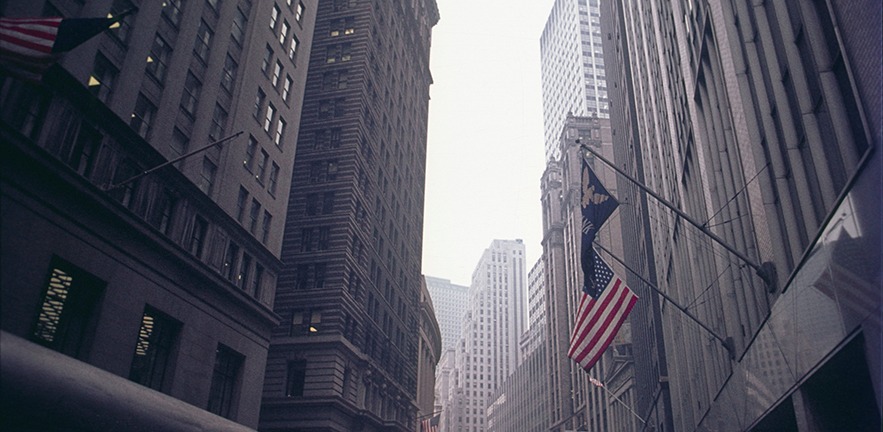Financial crisis media coverage of big banks was less critical when those banks received bailouts, as the press saw this as a sign of social acceptability, says study from Cambridge Judge Business School.
The influence of the media’s watchdog role on the government has been well chronicled, but a new study from Cambridge Judge Business School instead examines the impact of government decisions on media coverage – and finds that the tenor of media reporting on big US banks during the financial crisis was less critical when they received government bailouts.
“We show that negative media evaluations decreased with government support of the potentially misbehaving banks, and increased again when banks exited the support program,” says the study forthcoming in the journal Research in the Sociology of Organizations, which interprets the government bailouts as a signal of social acceptability that led to more positive press coverage.
Government has a stronger influence on media than previously thought
While it is commonly assumed that media reports precede and impact government action, the study finds that “media are also strongly influenced by the behaviour of the latter. Governments can ignore misconduct and support misbehaving organizations when the survival of those deviant organisations is crucial to society, which is interpreted positively by the media and reduces negative media judgements.”
Relationship between media and government acting as ‘social control agents’ examined in the context of the financial crisis
The paper identifies the media and government as two “social control agents” that influence both public opinion and behaviour, and it examines the interplay between them during and after the financial crisis.
Eight of the 26 biggest US banks including Citigroup and Bank of America received US government support through the Troubled Assets Relief Plan (TARP) beginning in 2008, with some of them repaying the money early. Although the banks were widely condemned for reckless behaviour that led to the crisis, including risky subprime loans, TARP was defended on grounds that financial stability required the big banks’ rescue.
The research is based on coverage of those 26 largest banks between 2007 and 2011 in the New York Times, Washington Post and Wall Street Journal, looking at articles over 16 bank-quarters to look at changes in coverage over time. The tone of negative coverage was assessed based on a total count of 345 words or word roots associated with negative emotions (such as “arrogance”, “pathetic”, “guilt” and “envy”). The negative coverage ranged from four to 2,430 negatively-tinged words about a given bank in a given quarter, showing the large variation of coverage between banks and over time.
When banks cut ties with the bailout programme, negative media coverage increased
The study also includes two other variables: the extent of government support as measured by preferred stock purchased by the government, and exit from the bailout programme. The correlation between greater TARP support and less critical media coverage is “statistically significant”, the study finds, and “when banks cut ties with the government to exit the TARP program, their negative evaluation goes up again.”
The study looks at how media and government deal with ambiguous situations. While government regulators and other agencies frequently punish organisations and individuals for criminal or civil wrongdoing, governments tied by conflicting demands “sometimes turns a blind eye” to misconduct for the greater societal good, the authors say.
Government supporting rather than punishing an organisation under suspicion of misconduct implies behaviour is socially acceptable
“Overall, our results show that state support tends to attenuate negative media coverage for misbehaving banks and that severing this tie bring back negative evaluations. We can conclude that the media scrutinise the link between potentially misbehaving organisations and the government through government bailouts, and that when the link is present they factor it positively in their evaluation of misbehaving organisations.
“The media will pay particular attention to the actions of the government because of its formal authority to set norms within society as well as adjudicate and punish norm violations. Therefore, when the government reacts towards an organisation under suspicion of misconduct by supporting this organisation instead of punishing it, the media will interpret this cue as implying the targeted organisation’s behaviour is socially acceptable. The government’s reaction to the misconduct and the move towards supporting a misbehaving organisation therefore contributes to reducing the initial ambiguity around the potential misconduct.
“Irrespective of whether media fully interpret government support of a transgressing organisation as resolving moral ambiguity around the potential misconduct, such support by the state can signal to the media the overall legitimacy of the transgressing organisation,” the study says.
The study
The study – entitled “A Bailout for the Outlaws: Interactions Between Social Control Agents and the Perception of Organizational Misconduct” – is co-authored by Rasmus Pichler, a PhD candidate at Cambridge Judge Business School and incoming Assistant Professor at Rotterdam School of Management; Thomas Roulet, Associate Professor in Organisation Theory; and Lionel Paolella, Associate Professor in Strategy & Organisation.


